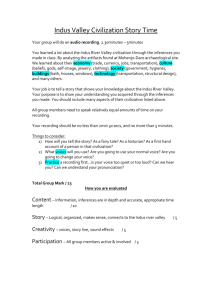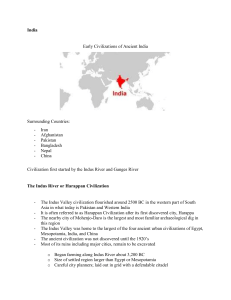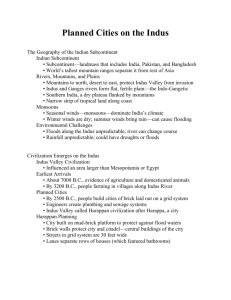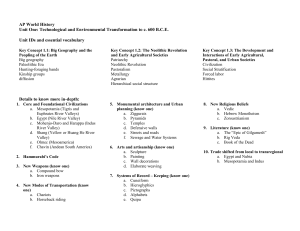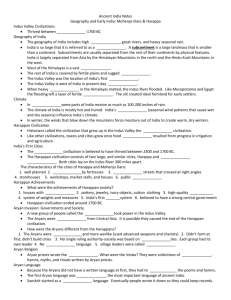Indus Valley Civilizations
advertisement
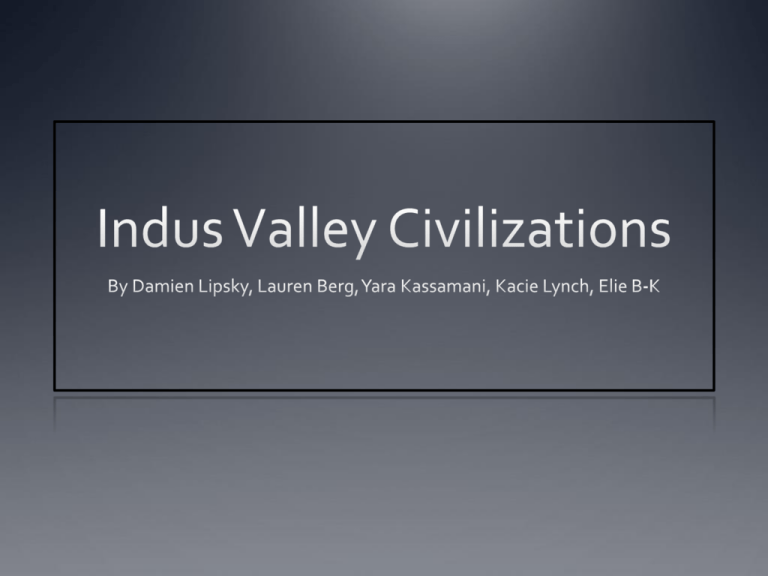
Location and physical features The Indus Valley civilization was in the north-west of india It was also next to the Indus river and Himalayas The absolute location is 28(degrees) 35’N and 77(degrees) 12’E The Indus valley had the Indus river going thought it. It also had the Himalayas as well as the Arabian sea on the coast Summary of Key Events The First Indian civilization arose in the Indus valley 4,500 years ago People settled throughout the entire subcontinent Regions included modern countries of India, Pakistan, Bangladesh, Nepal, Bhutan, and Sri Lanka Many people made their living through trade. Indian goods included silks, cottons, cashmere, ivory, spices and precious gems that could be found in the far east. Aryabhata, an Indian mathematician, computed the value of π. Art from the Indus Civilization including artifacts still remain today The practice of yoga still remains Arts Arts emerged from the Indus Valley during the second half of the 3rd millennium B.C Civic planning was very advanced (examples including the cities of Harappa, destroyed in the 19th century, and Mohenjo- Daro Produced many statuettes made of limestone and steatite Square steatite seals resembling animals Ceramic storage jars with simple stylized designs Toys with wheels Figurines (which may be mother goddesses) Arts Continued Mural paintings in caves that tell about the artistic style of early Indian painters Distictive styles of Hindu temples Square building with heavy walls enclosing a statue of a god Specific Example This picture shows a priest/ king statue. Nobody is entirely certain whether it resembles is a king or a priest. The artifact comes from Mohenjo-Daro and was probably created during the late Harappan period. Today, it is located at the National Museum of Karachi, Pakistan. Laws The Harappans were highly disciplined people They had a strong understanding of their civic duties Citizens kept their cities clean Residents would make sure that the underground drains were not choked from solid waste from the private baths’ drains The Harappans cooperated completely when it came to planning the towns and rebuilding public areas such as docks, warehouses, fortification walls, and platforms The Harappan administration worked to standardize Language The Harappan created a written language but no one has been able to decipher because linguist have not found any inscriptions that are bilingual so no one has fond part of the language transferred into another language.

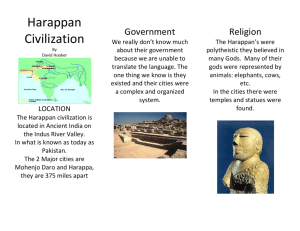

![Indus[1] - ridgeaphistory](http://s3.studylib.net/store/data/006736077_1-c59280ecd30594bac8ab21ec7bce4db4-300x300.png)
